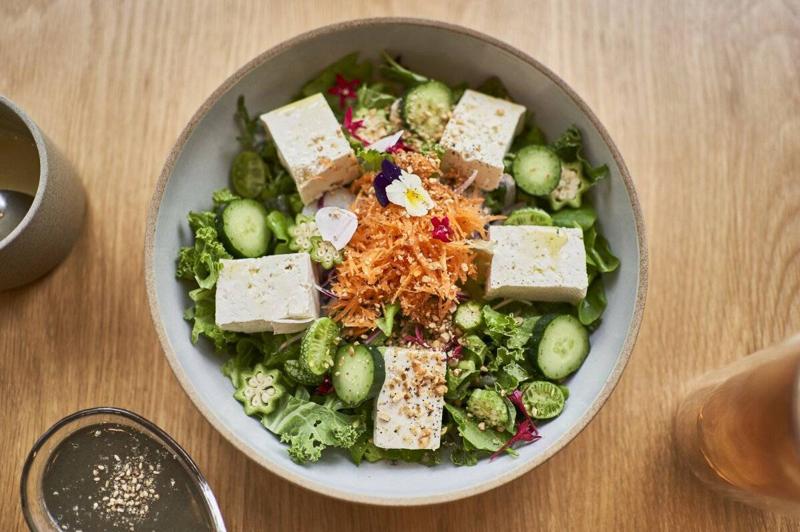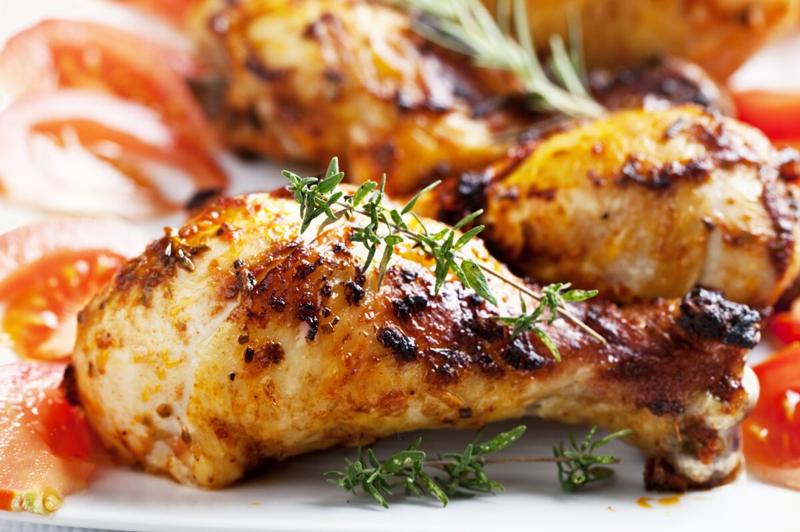The flexitarian diet, also referred to as a semi-vegetarian diet, allows you to enjoy the health benefits associated with vegetarianism without completely eliminating meat. Rather than giving up meat entirely, you have the flexibility to be vegetarian most of the time and indulge in a burger or steak on special occasions.
What Is Flexitarian?
The Flexitarian diet is a marriage of two concepts: flexible and vegetarian. The term was coined more than a decade ago by registered dietitian Dawn Jackson Blatner in her 2009 book, "The Flexitarian Diet: The Mostly Vegetarian Way to Lose Weight, Be Healthier, Prevent Disease and Add Years to Your Life."
Flexitarian is a type of vegetarian diet, like lacto-vegetarian or pesco-vegetarian diets, that isn't as strict as a classic vegetarian diet. With flexitarian, also known as a semi-vegetarian diet, you don't have to follow a completely anti-meat lifestyle to reap the health benefits associated with vegetarianism. Instead, you can choose meatless meals most of the time, but still enjoy a burger or steak on special occasions.
By eating more plant foods and less meat, studies show that people who follow the diet may not only lose weight but can improve their overall health by lowering their rate of heart disease, diabetes and cancer. And because it reduces meat consumption, it’s considered planet-friendly. Today, the message remains consistent.
“The focus is still: Eat more plants and be flexible instead of strict about it," Blatner says. "To be clear this is a ‘lifestyle,’ not a traditional ‘diet.’"
How Does the Flexitarian Diet Work?
Focus on non-meat proteins, like beans, peas or eggs.
Include fruits, veggies, whole grains, dairy and seasonings.
Gradually reduce meat portions and increase meat-free days per week during each stage. Tip: If you're craving meat, you can replace traditional meat with plant-based meat alternatives, such as veggie burgers.
Follow at your own pace by either jumping in or easing in.
Family friendly. Family members can easily all eat the meals together with little or no modification. The food options are healthy and balanced enough for all ages.
Budget friendly. Foods for this diet are easy to find at a typical grocery and don’t require expensive or specialty food items.
Planet friendly. The diet considers the environmental effects of food choices. It’s largely plant-based and/or the foods are mainly sustainably grown/produced.
Vegan or vegetarian friendly. Recipes can be easily modified for a vegan or vegetarian diet.
Gluten-free friendly. Recipes can be easily modified and still follow a gluten-free diet
Halal friendly. Recipes can be easily modified and still follow the diet.
Kosher friendly. Recipes can be easily modified and still follow the diet.
Low-fat. The diet encourages a moderate consumption of healthy fats – like olive oil – and discourages unhealthy fats – such as saturated fats – with less than about 30% of total calories coming from fat.
Can I Lose Weight on the Flexitarian Diet?
The short- or long-term weight loss happens as a positive effect of eating more plants rather than being on a restrictive diet. How quickly you lose and whether you keep weight off is up to you. The flexitarian diet ranked No. 5 for Best Weight-Loss Diets overall.
Short-Term Weight Loss
Following a flexitarian diet will not lead to short-term weight loss unless making drastic diet modifications along with a significant calorie deficit. However, if someone was previously following the standard American diet, which is rich in saturated fat animal proteins and low in vegetables and fiber, it is reasonable to expect long-term weight loss.
While following a flexitarian diet doesn't necessarily mean completely eliminating meat, studies have shown that plant-based diets lead to short-term weight loss (1).
Long-Term Weight Loss
The flexitarian diet ranked No. 5 (tied) for long-term weight loss out of 24 diets evaluated by U.S. News and our expert panelists. We define healthy long-term weight loss as the likelihood of maintaining significant weight loss for two years or more, based on available evidence.
One review of 25 different studies found that participants' body mass index was on average lower when they were following a semi-vegetarian diet than those who followed a non-vegetarian diet. Those who followed an entirely vegetarian diet, however, had the lowest BMIs of the review (2).
Weight Maintenance and Management
Because the flexitarian diet is non-restrictive and adaptable, you can follow this eating pattern indefinitely for ongoing, healthy weight maintenance.


Do: Go plant-heavy.
How to Get Started on the Flexitarian Diet
To ease into it, you can start by adding plants to every meal to start – at least 2 cups per meal, equivalent to half of your plate. Select one meal a day that you can easily replace animal products with plants. For example, you can switch out eggs and sausages with hearty oatmeal topped with chia seeds and berries for breakfast. For lunch, opt for a salad with beans instead of chicken.
“Consider planning out your week so you know when you will be eating animal products, allowing you to prepare for the other meals mindfully," Shapiro says. "Recognize that some weeks will be different than others but being mindful and having healthy vegetarian options available will make the process easier.”
What Does the Flexitarian Diet Cost?
Is the Flexitarian Diet Easy to Follow?
“It should be fairly easy since it allows for flexibility,” says Amy Shapiro, the founder of Real Nutrition, a New York City-based private practice to help clients optimize their nutrition, weight and overall wellness. “You can always come back to a plant-forward diet anytime and anywhere – especially after you realize how great you feel and how varied your diet has become.”
It’s convenient. Recipes abound, and meal prep shouldn't be too time-consuming. Eating out is doable, and alcohol is allowed. The diet emphasizes flexibility – you don't have to stick to any rules all day, every day.
Recipes are simple. "The Flexitarian Diet" book is packed with meal ideas. They're designed to help you easily prepare healthy flexitarian foods that you'll enjoy. Each recipe calls for an average of only five main ingredients.
Eating out is allowed and manageable. Check out restaurant menus beforehand to find healthy meals; most menus are now available through the restaurant’s website or elsewhere online. Be wary of foods described as fried, crispy, breaded, creamy, scalloped or sautéed. Instead, go for broiled, baked, grilled, roasted, poached and steamed.
Timesavers are built into the diet. Detailed meal plans and grocery lists are provided.
Extra information is available at your fingertips. Blatner's website includes recipes (searchable by category), grocery lists, FAQs and other information about the diet. The book is packed with advice, including a section called FlexLife Troubleshooters. Here, find answers to frequently asked questions about flexitarianism, dieting and weight loss; strategies to make healthy changes speedy and efficient; tips to tame cravings; and how to clear common diet hurdles, such as parties and traveling.
Feeling full shouldn’t be a problem. Nutrition experts emphasize the importance of satiety, the satisfied feeling that you've had enough. If you've built a healthful flexitarian diet around fiber-packed veggies, fruits, beans, lentils and whole grains, you shouldn't feel hungry between meals.
Taste varies daily. Recipes range from "lunch nachos" to a grilled cheese and rosemary-tomato sandwich, Caribbean black bean couscous and veggie enchiladas. For dessert, try a peach-raspberry crepe or pineapple with candied ginger and pecans.
Who Should Not Try The Flexitarian Diet?
Pros
Nutritionally sound.
Diverse foods and flavors.
Coaching and/or group support available.
Filling – it's rich in high-fiber foods.
No off-limit foods or food groups.
Convenient – grab and go options.
Has proven health benefits.
Cons
You’ll likely get hungry.
What Can I Eat? Do's and Don'ts of the The Flexitarian Diet
Foods to Eat
Whole grains.
Beans, chickpeas, lentils and tofu.
Nuts, seeds and seed butters.
Fruits and veggies.
Eggs, dairy or non-dairy milk and yogurt.
Foods to Avoid (or Limit)
Red meat, chicken, turkey and pork.
White rice, pasta and bread.
Alcohol in excess.
Vegan and Following the Flexitarian Diet
Because the flexitarian diet is well-rounded and includes all food groups, getting the nutrients you need while maintaining your vegan lifestyle is possible. All that you’ll need to do is swap plant-based milk products for traditional dairy and avoid eggs. See all vegan diets.
Vegetarian and Following the Flexitarian Diet
The average flexitarian adherent consumes between 9 and 28 ounces of animal protein each week (excluding fish and seafood); this is far less than the 84 ounces consumed weekly by the average American. You can easily convert the flexitarian diet into a lacto-ovo vegetarian diet. See all vegetarian diets.
Gluten-Free and Following the Flexitarian Diet
Most of the whole foods featured on the flexitarian diet are naturally gluten-free. Just be sure to scrutinize the labels on processed foods and choose gluten-free grains such as amaranth, quinoa and wild rice. See all gluten-free diets.
Halal and Following the Flexitarian Diet
You can easily avoid pork and choose other meat that is certified halal. You can select cheeses that do not contain rennet. See all halal diets.
Kosher and Following the Flexitarian Diet
By keeping any meat and dairy or fish that you eat separate from each other and choosing meat that has been certified as kosher and soaking it before preparation, you will be able to stick to kosher law while following a flexitarian diet. Choose fish with fins and scales if you want to include seafood in your diet. See all kosher diets.






